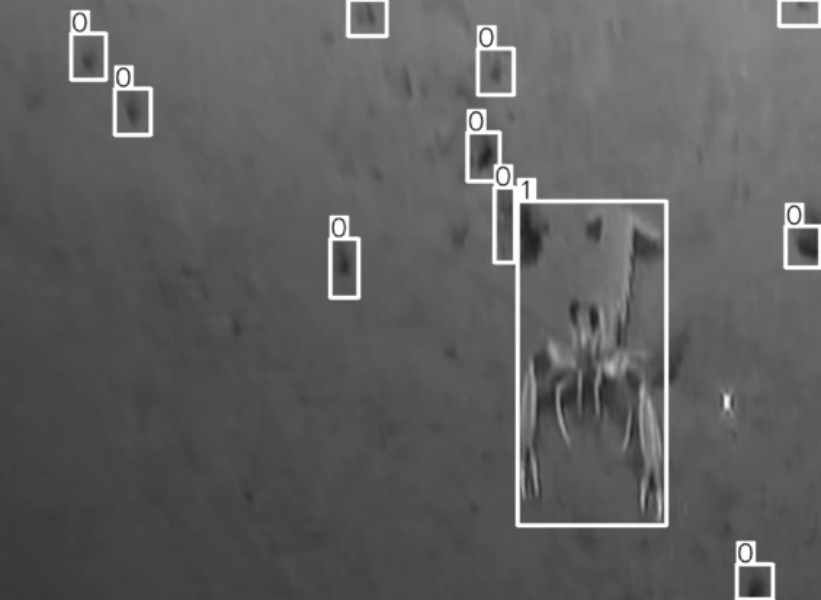The Norway lobster (Nephrops norvegicus) is one of the most important fishery items for the EU blue economy. The coopearation between ICM-CSIC and UiB allowed the elaboration of a software architecture based on YOLOv5, to identify and count Nephrops and estimate the numbers of its individuals per m2 (i.e., stock density) in deep-sea (350-380 m depth) Fishery No-Take Zones (FNTZs) of the northwester Mediterranean. That counting was carried out in real-time with evident advantages in field monitoring operations (i.e., avoiding time-consuming manual post-processing).
Inferencing models ware obtained by training open-source YOLOv5 with images from frames partitioning of videos acquired by the Remotely Operated Vehicle (ROV), LIORPUS 2000. Animal detections were also tracked in successive frames of video sequences to avoid biases in individual recounting, offering significant success and precision in detections and density estimations.
Each image was split into the minimum number of grayscale images that were randomly split into three disjoint sets (DSA, DSB, and DSC) with the same size, split in training, validation, and test subsets using different values width and height area.

A representative example in the three datasets of image processed with small bounding boxes are preserved in DSA, that most of them are removed in DSB, the remaining one being expanded to a minimum size, and that DSC only preserves large bounding boxes.
Additionally, a mutual collaboration is proposed for Martech 2023 in “Mesopelagic crustacean habitat identification and analysis using deep learning”. The abstract outlines a software infrastructure based on Deep Learning designed to identify habitats of crustacean species in the marine Mesopelagic zone. Detection is based on the identification of holes in the sand forming burrow structures. Preliminary inferencing models, developed from images captured in the North Sea by trawled UWTV stations, have demonstrated significant success ratios in detecting these habitats. https://upcommons.upc.edu/handle/2117/392126




